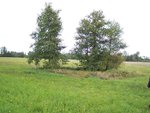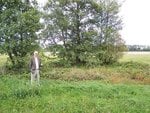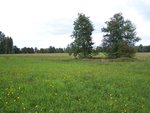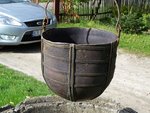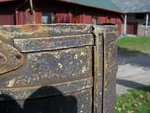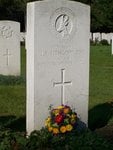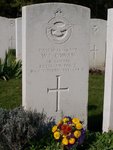August and September 1944 have poignant memories for Poles and South African airmen. By August 1, 1944, the Russians had advanced to within a few miles east of Warsaw. General "Bor" Komorowski and other leaders of the Polish underground resistance (the "Home Army") judged the time right for rebellion against Nazi occupying forces. Stalin thought otherwise, as he had his own plans for post-war Poland. He halted his troops 15 miles east of the Vistula River within 48 hours when the Home Army decided to go into action, encouraged by previous promises of Soviet's support.
In desperation, the Home Army appealed to Britain and America for much needed arms, amunition, and medical supplies. These could only be delivered by air-drops. Again Stalin said "Nyet". This time to the reasonable suggestion that aircraft might land in Russian-held territory to re-fuel. The Liberators of SAAF 2 Wing - 31 and 34 Squadrons - based at Foggia in Southern Italy, and Halifaxes, flown by the RAF, whose 148 and 178 Squadrons, as well as Polish Flight No. 1586, also took part. The proposed supply*drops meant a journey of 1600 km out over heavily defended occupied territory; roof-top height approach to the dropping zones in flames of the burning city; and another 1600 km back to base - if they were lucky.
Out of 186 sorties, 92 were considered successful. That is, the Home Army were able to retrieve some of the material dropped. Thirty-one aircraft were lost - 17 on the four terrible nights of August 13-16. 69 lives of South African pilots were lost during this operation.
The Poles have long memories for their friends. To this day, flowers are laid on the graves of the airmen who did not make it; a special memorial has been placed in St Anne's Church, Warsaw; and another built by the late Bronek Kowalski (former officer of the Polish Home Army) at Michalin where a Liberator piloted by Jack van Eyssen crashed after the supply drop, with the loss of three crew members. Those were Bob Hamilton, Leslie Mayes and Herbert Hudson.
Every year, without exemption, since 1947 a commemoration service and function is held by Polish Community in Johannesburg to honour those who fell. Initially the venue was a Cenotaph Memorial in the centre of the city. Since 1981, service is being held at the Katyn Memorial erected in memory of Polish prisoners of war who were murdered by the Soviet security forces. In 1989, monument was extended to honour South African Airmen who tookpart in the Relief Flights.
"Poland will never forget her faithful friends who went to her help in her hour of isolation and despair" - these were significant words of H.E. Stanislaw Cieniuch - first Ambassador of the truly independent Poland during the Warsaw Flights commemoration of the year 1991.
Relief Flights did not achieve its military objectives, mostly due to the political scene of post-war Europe. However, commemorations held through the years have cemented bonds of friendship between the Poles and their South African friends. SASF effort have become one of the important links in Polish struggle for independence, although it came 45 years later.
In Michalin near Warsaw there is an annual event taking place to commemorate Flights and Airmen who died there. After untimely death of Bronek Kowalski monument marking the place where they fell requires renovation. Polish artists who did visit South Africa are organising fund raising concert in the Ateneum theatre in Warsaw on the 1st of June 2001. It is entitled "Polish Artists for South African Airmen". List of the performers is compiled of the best in Poland. Polish Minister of Foreign Affairs is most likely to take patronage of this event. Support is also given by the diplomatic corps with South African Ambassador Sikose Mji heading the list. Chief of SAAF will sent his representative. Polish businessmen are also helping to collect funds. The monument will receive maintenance free finishes throughout.
( by Andrzej Romanowicz )
In desperation, the Home Army appealed to Britain and America for much needed arms, amunition, and medical supplies. These could only be delivered by air-drops. Again Stalin said "Nyet". This time to the reasonable suggestion that aircraft might land in Russian-held territory to re-fuel. The Liberators of SAAF 2 Wing - 31 and 34 Squadrons - based at Foggia in Southern Italy, and Halifaxes, flown by the RAF, whose 148 and 178 Squadrons, as well as Polish Flight No. 1586, also took part. The proposed supply*drops meant a journey of 1600 km out over heavily defended occupied territory; roof-top height approach to the dropping zones in flames of the burning city; and another 1600 km back to base - if they were lucky.
Out of 186 sorties, 92 were considered successful. That is, the Home Army were able to retrieve some of the material dropped. Thirty-one aircraft were lost - 17 on the four terrible nights of August 13-16. 69 lives of South African pilots were lost during this operation.
The Poles have long memories for their friends. To this day, flowers are laid on the graves of the airmen who did not make it; a special memorial has been placed in St Anne's Church, Warsaw; and another built by the late Bronek Kowalski (former officer of the Polish Home Army) at Michalin where a Liberator piloted by Jack van Eyssen crashed after the supply drop, with the loss of three crew members. Those were Bob Hamilton, Leslie Mayes and Herbert Hudson.
Every year, without exemption, since 1947 a commemoration service and function is held by Polish Community in Johannesburg to honour those who fell. Initially the venue was a Cenotaph Memorial in the centre of the city. Since 1981, service is being held at the Katyn Memorial erected in memory of Polish prisoners of war who were murdered by the Soviet security forces. In 1989, monument was extended to honour South African Airmen who tookpart in the Relief Flights.
"Poland will never forget her faithful friends who went to her help in her hour of isolation and despair" - these were significant words of H.E. Stanislaw Cieniuch - first Ambassador of the truly independent Poland during the Warsaw Flights commemoration of the year 1991.
Relief Flights did not achieve its military objectives, mostly due to the political scene of post-war Europe. However, commemorations held through the years have cemented bonds of friendship between the Poles and their South African friends. SASF effort have become one of the important links in Polish struggle for independence, although it came 45 years later.
In Michalin near Warsaw there is an annual event taking place to commemorate Flights and Airmen who died there. After untimely death of Bronek Kowalski monument marking the place where they fell requires renovation. Polish artists who did visit South Africa are organising fund raising concert in the Ateneum theatre in Warsaw on the 1st of June 2001. It is entitled "Polish Artists for South African Airmen". List of the performers is compiled of the best in Poland. Polish Minister of Foreign Affairs is most likely to take patronage of this event. Support is also given by the diplomatic corps with South African Ambassador Sikose Mji heading the list. Chief of SAAF will sent his representative. Polish businessmen are also helping to collect funds. The monument will receive maintenance free finishes throughout.
( by Andrzej Romanowicz )



